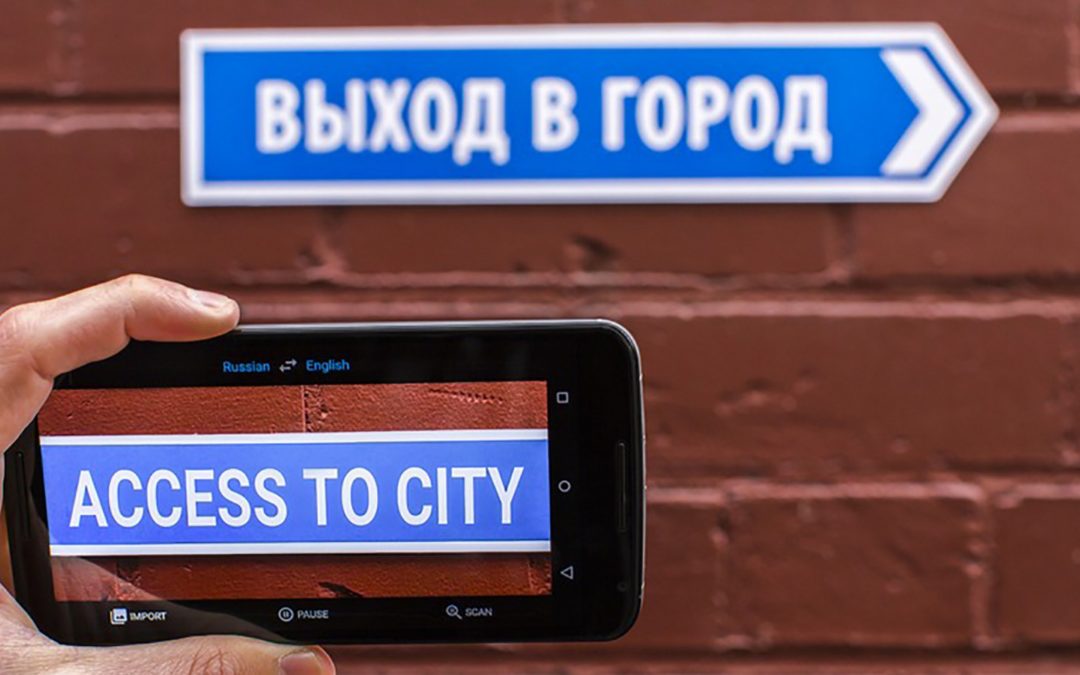There is an increasing need for real-time translation. In today’s increasingly globalized world, language barriers need to be broken down, here and now. Real-time translation is no longer a luxury, but a necessity, and technology is catching up. From virtual assistants to smart cameras, today’s technology is helping to interpret and translate the world around us in ways that are almost seamless and in real time. For high stakes medical, legal and political exchanges, we continue to rely on skilled human interpreters, for obvious reasons. However, for casual use, or for people simply trying to understand the world around them, tech is here to help.
Hey Google
Google is one of the large tech companies that is making great strides in the field of translation and interpreting. As Google Translate translates over 140 billion words a day, its service is only getting better. Also, recently, Google introduced Interpreter Mode, which is now available on all Android devices. Google’s Interpreter Mode can handle real-time translation on your phone across 44 languages. Just say ‘Hey Google, help me speak French’, and your Google Assistant will automatically enter Interpreter Mode. Google’s new Pixel Buds, set to be released in the spring, should allow you to do this completely hands-free.
Moreover, through Google Lens, Google’s image recognition technology, you can simply point your camera at foreign road signs or menus to decipher the content. It’s a less than perfect feature, but it can be extremely helpful in parts of the world where you’re unfamiliar with the local alphabet. Google also recently announced they plan to release a live-transcription feature, which will effectively turn your phone into a real-time translator for long-form speech.
Online Content
According to Google’s AI Director of Product, Barak Turovsky, half of the internet’s content is in English, but only 20% of the global population have any English skills whatsoever. In other words, there is a huge need for automatic translation of everything that transpires on social media, primarily from English to Chinese. With 2.5 billion users, Facebook is the biggest social network. And since more than half of those users post in a language other than English, Facebook has found itself to be one of the frontrunners in employing artificial intelligence to translate content. Since Facebook also owns Messenger, Instagram, and WhatsApp, that means more than 6 billions translations a day.
However, relying on AI to translate content can be potentially dangerous. AI models need data, and lots of it. There is a lot more data between Spanish and English for example, than there is between Burmese and Icelandic. Sometimes, an intermediary language such as English may be used, rather than a direct pairing from one less common language to another. One example of AI screwing the pooch was Chinese leader Xi Jinping’s name turning up as a curse word when Facebook posts were translated from Burmese to English, because the president’s name was missing in Facebook’s Burmese language model. So even though machine translation might not be used to translate doctor’s orders just yet, AI translation models are improving exponentially, and they will be indispensable to translate the online content boom.
On-Demand Interpretation
The professional interpretation industry is not immune to the increasing demands of consumers. Face-to-face interpreting is becoming a thing of the past as customers increasingly request interpreters through video chat. It is faster, cheaper and often more convenient for the parties involved. In 2020, VRI and OPI (Video Remote Interpretation & Over the Phone Interpretation) are the key to growing your business. If you are a language service provider, contact Interpreter Intelligence to see how our platform’s video and phone interpretation features can help you instantly connect the right interpreter to your customer.


Recent Comments